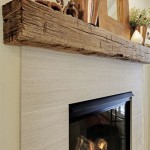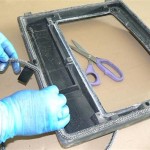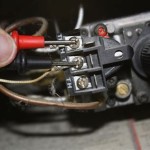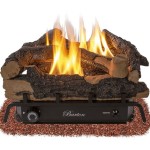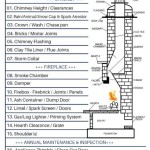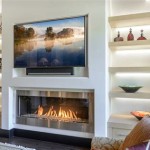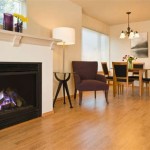Outdoor Fireplace Screens: Large Format Safety and Style
Outdoor fireplaces offer a captivating focal point for patios, decks, and gardens, extending living spaces and providing warmth and ambiance. However, the open flame presents inherent safety concerns. Sparks, embers, and even logs can escape, posing a fire hazard to surrounding structures and vegetation. A large outdoor fireplace screen serves as a crucial barrier, mitigating these risks while also enhancing the aesthetic appeal of the fireplace.
Selecting the appropriate size and style of a large outdoor fireplace screen requires careful consideration. The screen must adequately cover the firebox opening to prevent debris from escaping, and its design should complement the overall architectural style of the outdoor space. Factors such as material durability, mesh construction, and ease of use all contribute to the screen's effectiveness and longevity.
This article explores the various aspects of large outdoor fireplace screens, covering their benefits, materials, styles, sizing considerations, and essential safety features. Its aim is to provide a comprehensive guide for selecting the optimal screen that combines safety, functionality, and visual appeal for an outdoor fireplace.
The Primary Benefits of Large Outdoor Fireplace Screens
The advantages of using a large outdoor fireplace screen extend beyond basic fire containment. These screens provide a multi-faceted layer of protection and enhancement to the outdoor fire experience.
One of the most significant benefits is fire safety. The screen acts as a physical barrier, preventing sparks and embers from being ejected into the surrounding area. This is particularly crucial in dry climates or during periods of drought when even a small ember can ignite dry leaves or grass, leading to a significant fire. By containing the fire within the designated area, the screen minimizes the risk of accidental fires to property and surrounding landscape.
Another benefit of using a large outdoor fireplace screen is protection from direct heat. While enjoying the warmth of a fire is desirable, excessive heat can be uncomfortable and even dangerous. The screen diffuses the radiant heat, creating a more comfortable zone around the fireplace and reducing the risk of burns from accidental contact with the flames. This allows for closer proximity to the fire, enhancing the social aspect of outdoor gatherings.
Beyond safety and comfort, a large outdoor fireplace screen can also enhance the aesthetic appeal of the fireplace. Screens are available in a wide variety of styles, from simple and minimalist designs to ornate and decorative options. Choosing a screen that complements the architectural style of the house and the surrounding landscape can elevate the overall look of the outdoor space. A well-chosen screen can become an integral part of the fireplace's design, adding a touch of elegance and sophistication.
Finally, a large outdoor fireplace screen can help to contain debris within the firebox. This reduces the amount of cleanup required after each fire and helps to maintain the cleanliness of the surrounding area. By preventing ash and partially burned wood from escaping, the screen contributes to a tidier and more enjoyable outdoor environment.
Material Selection for Durability and Longevity
The material used in the construction of a large outdoor fireplace screen plays a crucial role in its durability, longevity, and overall performance. The screen will be exposed to high temperatures, fluctuating weather conditions, and potential physical impacts, so choosing a robust and weather-resistant material is essential.
Steel is a popular choice for outdoor fireplace screens due to its strength, durability, and affordability. Steel screens are typically coated with a high-temperature paint or powder coating to resist rust and corrosion. The gauge of the steel used will determine its thickness and resistance to warping under high heat. Thicker gauge steel offers greater durability and a longer lifespan. However, steel can be prone to rust if the protective coating is damaged or scratched, so regular maintenance is important.
Stainless steel offers superior corrosion resistance compared to standard steel, making it an excellent choice for coastal environments or areas with high humidity. Stainless steel screens are more expensive than steel screens, but their increased durability and resistance to rust can make them a worthwhile investment in the long run. Stainless steel also tends to maintain its appearance better over time, resisting staining and discoloration.
Wrought iron is another option for outdoor fireplace screens, offering a classic and elegant look. Wrought iron is strong and durable, but it is also susceptible to rust if not properly maintained. Wrought iron screens are typically coated with a protective finish, but this finish may need to be reapplied periodically to prevent corrosion. The intricate designs often found in wrought iron screens can also be more difficult to clean than simpler designs.
Copper is a premium material option that offers exceptional durability, corrosion resistance, and a distinctive aesthetic appeal. Copper screens will develop a natural patina over time, adding to their visual character. Copper is also an excellent conductor of heat, which can help to distribute warmth more evenly around the fireplace. However, copper screens are generally the most expensive option.
The choice of material will depend on budget, aesthetic preferences, and environmental considerations. Selecting a material that is well-suited to the local climate and the intended usage of the fireplace will ensure the screen's longevity and performance.
Sizing and Style Considerations for Optimal Functionality
Choosing the correct size and style of a large outdoor fireplace screen is crucial for ensuring both safety and aesthetic appeal. A screen that is too small will not provide adequate protection from sparks and embers, while a screen that is too large may look awkward and detract from the fireplace's design. The style of the screen should complement the overall architectural style of the outdoor space and reflect personal preferences.
Accurate measurement of the fireplace opening is the first step in determining the appropriate screen size. Measure the width and height of the firebox opening, ensuring to account for any irregularities or angled surfaces. The screen should be at least a few inches wider and taller than the opening to provide complete coverage. Overlapping the firebox opening by four to six inches on all sides is generally recommended.
The depth of the screen is another important consideration. A deeper screen will provide greater protection from sparks and embers, especially in windy conditions. However, a screen that is too deep may protrude excessively and interfere with the fireplace's functionality. A depth of 10 to 15 inches is typically sufficient for most outdoor fireplaces.
The style of the screen should be chosen to complement the overall design of the outdoor space. Simple and minimalist screens are well-suited to modern or contemporary settings, while ornate and decorative screens are more appropriate for traditional or rustic styles. Consider the materials, colors, and patterns used in the surrounding landscape and architecture when selecting a screen style.
There are several different types of outdoor fireplace screens available, including single-panel screens, three-panel screens, and hinged screens. Single-panel screens are the simplest and most affordable option, but they may not provide as much stability as multi-panel screens. Three-panel screens offer greater stability and can be adjusted to fit a variety of fireplace openings. Hinged screens allow for easy access to the firebox for adding wood or tending to the fire. Consider the pros and cons of each type of screen before making a decision.
In addition to the size and style of the screen, the mesh construction is also important. The mesh should be fine enough to prevent sparks and embers from escaping, but it should also allow for adequate airflow to maintain a healthy fire. Woven mesh is generally more durable and resistant to damage than welded mesh. Look for screens with reinforced edges and sturdy construction to ensure longevity.
The selection process should consider the specific needs of the fireplace and the surrounding environment. Thoughtful attention to sizing and style will result in a screen that is both functional and visually appealing, enhancing the safety and enjoyment of the outdoor fire experience.
Essential Safety Features and Maintenance Practices
A large outdoor fireplace screen is inherently a safety device, but certain features and maintenance practices can further enhance its effectiveness and ensure its longevity. Regularly inspecting and maintaining the screen is crucial for preventing accidents and prolonging its lifespan.
One of the most important safety features is a secure latching mechanism. The latch should be strong enough to prevent the screen from being accidentally opened or blown open by the wind. Look for screens with multiple latches or a locking mechanism for added security. The latches should be easy to operate, even with gloves on, but also resistant to tampering by children or pets.
Handles or grips are another essential safety feature. These allow for easy and safe handling of the screen, especially when it is hot. The handles should be made of heat-resistant material and should be securely attached to the screen. Avoid touching the screen directly when it is hot, even if it has handles, as the metal can still conduct heat.
Stable feet or a secure base are crucial for preventing the screen from tipping over. The feet should be wide enough to provide a stable base, even on uneven surfaces. Consider using weights or anchors to further secure the screen, especially in windy conditions. A tipping screen can not only be a fire hazard but also pose a risk of injury.
Regular inspection of the screen is essential for identifying any signs of damage or wear. Check for rust, cracks, or holes in the mesh. Inspect the latches, handles, and feet for any signs of looseness or damage. Repair or replace any damaged components promptly to maintain the screen's effectiveness.
Cleaning the screen regularly will help to prevent the buildup of soot and creosote, which can reduce airflow and increase the risk of fire. Use a wire brush to scrub the mesh and remove any debris. A mild detergent and water can be used to clean the screen, but be sure to rinse it thoroughly and allow it to dry completely before using it again.
During the off-season, store the screen in a dry and protected location to prevent rust and corrosion. Cover the screen with a tarp or place it in a shed or garage. This will help to prolong its lifespan and keep it in good condition for years to come. By prioritizing safety features and adhering to regular maintenance practices, the large outdoor fireplace screen can provide years of reliable protection and enhance the enjoyment of the outdoor fire.

Plow Hearth Large Tree Of Life Fireplace Metal Fire Screen With Door Target

12 Best Freestanding Fireplace Screens 2024

Fireplace Mesh Valance Screens

Uniflame 50 S 1075 Large Single Panel Black Wrought Iron Screen Panels

12 Best Freestanding Fireplace Screens 2024

Barton 4 Panel Wrought Iron Fireplace Screen Fire Spark Guard Hinged Doors With Tools 96323 The Home Depot

51 Decorative Fireplace Screens To Instantly Update Your

Five Fabulous Outdoor Fireplace Ideas Coogans Landscape Design

Deco Metal Fireplace Screen West Elm

Fireplace Mesh Valance Screens
Related Posts

